With STAR Market as Standard: Rating Scheme of Potential Sci-tech Enterprises is Released to Actively Explore the Way of Listing for China’s Potential Sci-tech Enterprises (I)
发布时间:2021-07-22
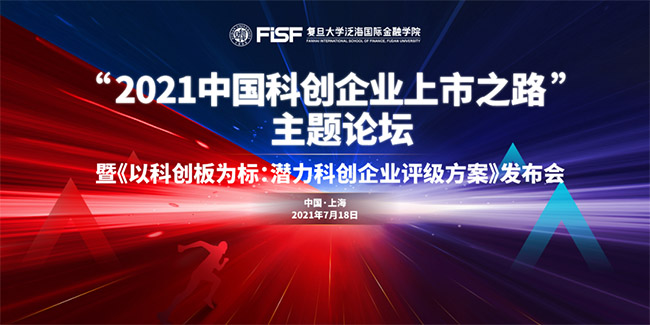
Today (July 22nd 2021), The
Science and Technology Innovation Board (the STAR Market), the “experimental
plot” of the capital market reform, celebrated its 2nd anniversary.
Over the two years, the STAR Market has gone through sharp reform and achieved
fruitful results, including the dynamic registration system and a second prime.
The many innovative and vigorous results represent the determination and
efficacy of technological innovation in the capital market. To further
accelerate technological innovation and constantly deepen the system reform in
the capital market, on July 18th 2021, the theme
forum of “2021 Ways of Listing for China’s Sci-tech Enterprises” was successfully held,
gathering distinguished guests from government units, university thinktanks,
sci-tech enterprises, industrial parks and press media to have in-depth
discussions on the achievements and experience acquired by the reform of the
pilot registration system on the STAR Market in its two years and to actively
explore the ways of listing for China’s potential sci-tech enterprises.
It is particularly noteworthy that With STAR Market as Standard: Rating Scheme of
Potential Sci-tech Enterprises led by Professor Jun Qian, Executive Dean of FISF, was initially released.
Based on the analysis framework of relevant fields of company finance, capital
markets and company governance and in combination of the features of China’s
capital market and the reform of the registration system, the scheme screens
and excavates potential sci-tech enterprises through rigorous statistics and
econometric analysis and makes an overall assessment on the gap between these
potential sci-tech enterprises with those already listed on the STAR Market so
that a relatively comprehensive evaluation result and improvement direction can
be offered for the future development and strength increase of these potential
enterprises.

Present on the forum were Mr. Guangshao
Tu,
Chairman of FISF International Advisory Committee, Distinguished Professor of
Finance, Former Member of the Standing Committee of Shanghai Municipal Party
Committee, Executive Vice Mayer, and Former Vice Chairman and General Manager
of China Investment Corporation; Mr. Jun Li, Deputy Director of
Shanghai Municipal Financial Regulatory Bureau (Shanghai Financial Work
Bureau), and Mr. Zhenghong
Zhu, Former Director of Shanghai Technology Innovation
Center, Chairman of Shanghai Technology Exchange and Professor-level Engineer,
and
other distinguished guests. They focused and gave splendid speeches on the
three topics of “the STAR Market and institutional
supply in the
capital market”, “bringing the STAR Market as the
experimental plot into play and promoting high-quality development of sci-tech
enterprises” and “building a high-growth habitat for sci-tech enterprises and
constructing the cultivation system of sci-tech enterprises”, guiding and
promoting the high-quality development of the STAR Market by sharing and
spreading their opinions. Professor Jun Qian, Executive Dean of FISF, released With STAR Market as Standard: Rating Scheme
of Potential Sci-tech Enterprises and interpreted sci-tech enterprise
cases. In the round-table dialogue, Mr. Yongwei Li, Co-head of Huatai United
Securities Shanghai Department, Mr. Le Lin, Founder and CEO of Shanghai
Neng Lian Technology Co., Ltd (Neng Lian Technology), Mr. Yuanjie Xu, Senior Internet
Marketing Expert, Former CEO of China.com and Former COO of Baihe.com, and other
guests conducted fierce discussion on the topic of “boosting China’s technology
development with the STAR Market - the new ecosystem in the capital market
under the reform of the registration system”. Professor Huasheng
Gao, Deputy Dean of Faculty and Research, hosted the
round-table dialogue.
Guests attending the forum also included
relevant leaders of Shanghai Lingang New Area Economic
Development Co., Ltd., Suzhou Industrial Park, Suzhou Hi-tech District
Industrial Development Zone, Changzhou National Hi-tech District Industrial
Development Zone, Management Committee of Changxing Economic and Technological
Development Zone, Nantong Suxitong Science and Technology Industrial Park,
South Taihu New Area of Huzhou, Shanghai Office of Huzhou Nanxun District
Government and Kunshan China Merchants Group of Nantong Haimen
District.
Mr. Guangshao Tu first delivered his speech
entitled “the STAR Market and institutional supply in the capital
market”.
He analyzed the three aspects of the major significance, the need to keep pace
with the times and the demand for systematic advance of the institutional
supply in the capital market and introduced the overall innovation progress of
the institutional supply in the capital market. He emphasized that the STAR
Market, as a specific product of the institutional supply in the capital
market, focuses on the hard&core technology industry that urgently needs to
be developed in China and prominently drives and guides the next step of
economic development and industrial structure upgrading in China. During the
forum, Tu spoke highly of With STAR
Market as Standard: Rating Scheme of Potential Sci-tech Enterprises,
pointing out that a series of specific preparations are needed for the
development of the STAR Market, and that the assessment and evaluation system
of the enterprises planning to be listed will assist sci-tech enterprises to
have a clearer targeting and thus make better preparations for their listing on
the STAR Market. This can further improve the quality of enterprises listed on
the STAR Market and promote the high-efficiency and high-quality development of
the STAR Market.
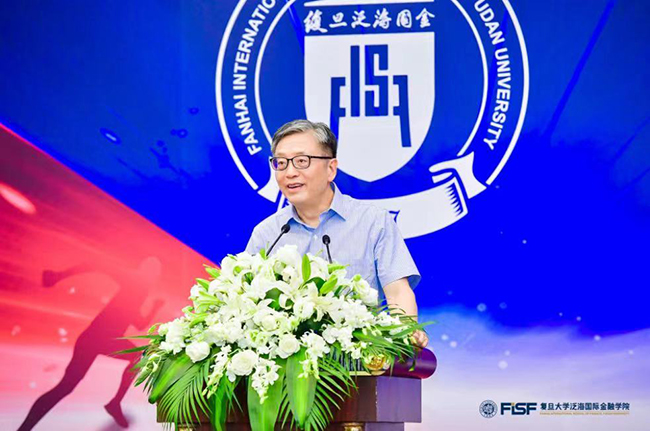
Mr. Jun Li indicated in his speech of “bringing
the STAR Market as the experimental plot into play and promoting high-quality
development of sci-tech enterprises” that during the two years since the launch of the STAR Market,
Shanghai Municipal Financial Regulatory Bureau focused on the six main fields
of the STAR Market and three leading industries to enhance business incubation
and cultivation, and has achieved remarkable results in four aspects. Firstly,
the multilevel working mechanism of departmental linkage and urban coordination
has been preliminarily established; secondly, the two libraries of sci-tech
enterprises and policy instruments have basically taken shape and the
multilayer, multi-class “Light of Pujiang River” technology enterprise library
has also been formed; thirdly, the service system for the three key links and
the whole life cycle of enterprise growth has also come into being; and fourth,
the relevant supporting environment including judicial guarantee has been
continually perfected. Li said With
STAR Market as Standard: Rating Scheme of Potential Sci-tech Enterprises
released by FISF is a practical measure for universities to serve the
construction and development of the technology innovation center. He wished
FISF to tightly seize the mechanical opportunities offered by the registration
system on the STAR Market, go deeper in studying the development law of
sci-tech enterprises and the demands of enterprises for financial services,
and, by taking this forum as a chance, build a platform that offers
high-quality services for the vast sci-tech enterprises.
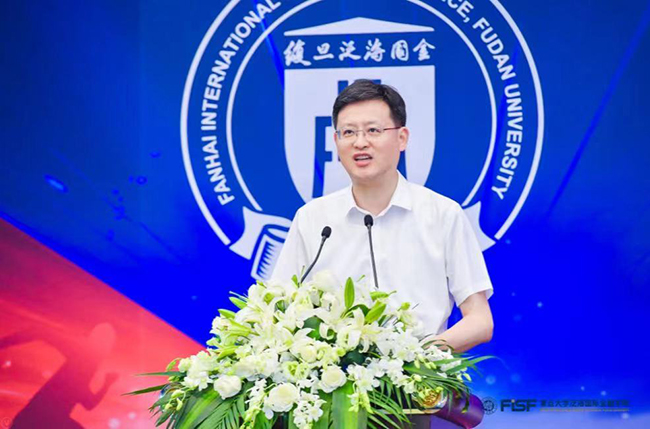
In his speech of “building a high-growth
habitat for sci-tech enterprises and constructing the cultivation system of
sci-tech enterprises”,
Mr. Zhenghong Zhu elaborated on the critical methods of building a high-growth
habitat for sci-tech enterprises in Shanghai and provided some innovative ideas
for the construction of the sci-tech enterprise cultivation system in the
Yangtze River Delta and even the whole nation. According to research data, by
2020 there have been 191 incubators, 182 maker spaces, 108 start-up nurseries,
13 start-up accelerators and 13 university science parks in Shanghai as
start-up carriers, incubating 21250 enterprises with 4076 having already graduated.
It is widely recognized that the internal driving forces of the high growth of
enterprises are core teams, core technology and innovative ideas, all the three
of which are indispensable. Then what are the external environmental factors
for the high growth of enterprises? Mr. Zhu believed that resources, policies,
services and cultures are the four most essential external environmental
factors to boost high growth of enterprises. Through the latest statistics and
vivid cases, he specifically analyzed a series of policies implemented in
Shanghai for the construction of the high-growth habitat for sci-tech
enterprises such as the sailing plan, recognition of hi-tech enterprises and
venture capital linkage, as well as the featured professional services like three-tier
coaching echelon, innovation and entrepreneurship competitions, and “investment
plus incubation”. At last, Zhu concluded that the cultivation system of
sci-tech enterprises in Shanghai has three features of high coordination,
linkage realization and government promotion.
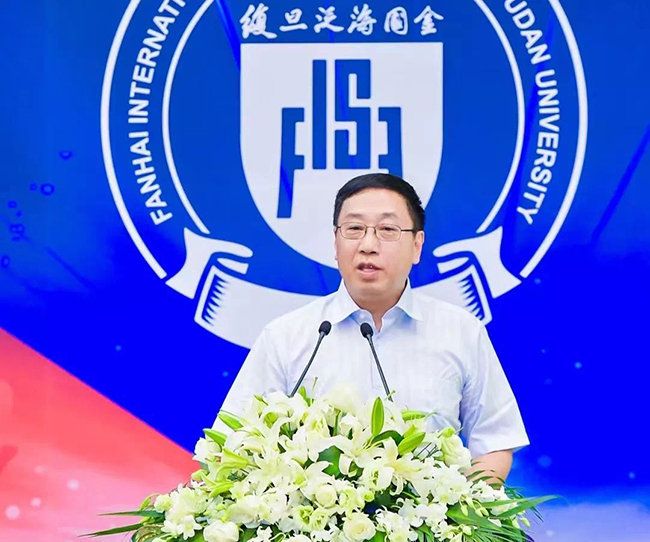
As the “key role” at this forum, Professor Jun Qian released an in-depth interpretation of With STAR Market as Standard: Rating Scheme of Potential Sci-tech
Enterprises. To further enrich the
reserve resources of listed enterprises on markets with the registration system
such as the STAR Market and the Second-board Market and to screen and explore potential
high-quality sci-tech enterprises, FISF cooperates with relevant units and
jointly launched the in-depth study and overall analysis on With STAR Market as Standard: Rating Scheme
of Potential Sci-tech Enterprises. The scheme first selects enterprises that have already met or
can grow within a short time to meet the basic listing requirements according
to the six fields and five sets of criteria for listing on the STAR Market.
Based on this, it then further targets the enterprises already listed on the
STAR Market and, in combination of the financial performance, company
governance, R&D and innovation capabilities and idiosyncratic risks of the
enterprises, selects an already-listed enterprise with the closest
comprehensive performance for each enterprise to be assessed by means of
propensity score matching. In the end, the assessment scheme is based on two
parts: first is the quantitative analysis according to the five sets of
criteria for listing and the second is the four levels from A to D summarized
through the score gap between the enterprise to be assessed and the
already-listed enterprise with the closest performance, which is an assessment
system built on the basis of standardized data. In addition, project teams may also
generate more comprehensive and thorough assessment reports depending on
personalized data offered by certain enterprises and special industries
(including interviews with senior management of enterprises or with
entrepreneurial teams).
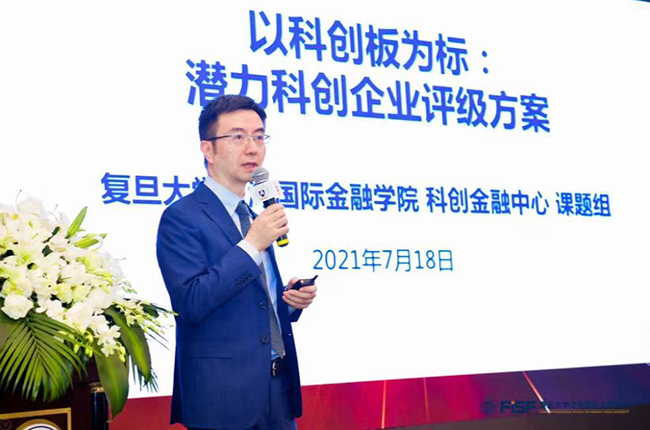
Professor Jun Qian made reference to the fact
that China’s capital market has gone through 30 years’ trials and
hardships and now further developing Chinese stock market is one of the most
significant missions of China’s financial system. Based on research data,
Professor Qian compared the long-term performance of the major stock indexes in
multiple regions at home and abroad within the 29 years. As is shown by the
data, from 1992 to the end of 2020, the cumulative rate of return (inflation
excluded) of Shanghai Composite Index in the 29 years is 1.46, and its annual
net rate of return (inflation excluded) is around 1.3%. The numbers correspond to
the Nikkei Stock Average with inflation excluded while lower than the stock
indexes in other emerging markets and mature markets. On the other hand, during
the 19 years from 2000 to 2018, the cumulative rate of return (inflation
excluded) of Chinese enterprises listed abroad (mainly those listed in Hong
Kong China and the US) has reached 3.5, which is way ahead of most stock
markets worldwide in the corresponding period. The long-term performance of A-share listed
companies in China is a bit disappointing, thus many Chinese sci-tech companies
and international giants in emerging industries choose to list abroad. With
structural problems of listing and delisting mechanisms in China’s stock
market, the launch of the STAR Market and the pilot registration system is
critical to the development of China’s stock market. Qian stressed that With STAR Market as Standard: Rating Scheme
of Potential Sci-tech Enterprises offers a method system of assessing
the strength of non-listing sci-tech enterprises, the potential sci-tech
enterprise reserve worthy of market attention and a new idea to construct the
overall assessment index system. Recently FISF will work with cooperating units
and officially release the first potential sci-tech enterprise rating report in
China.
